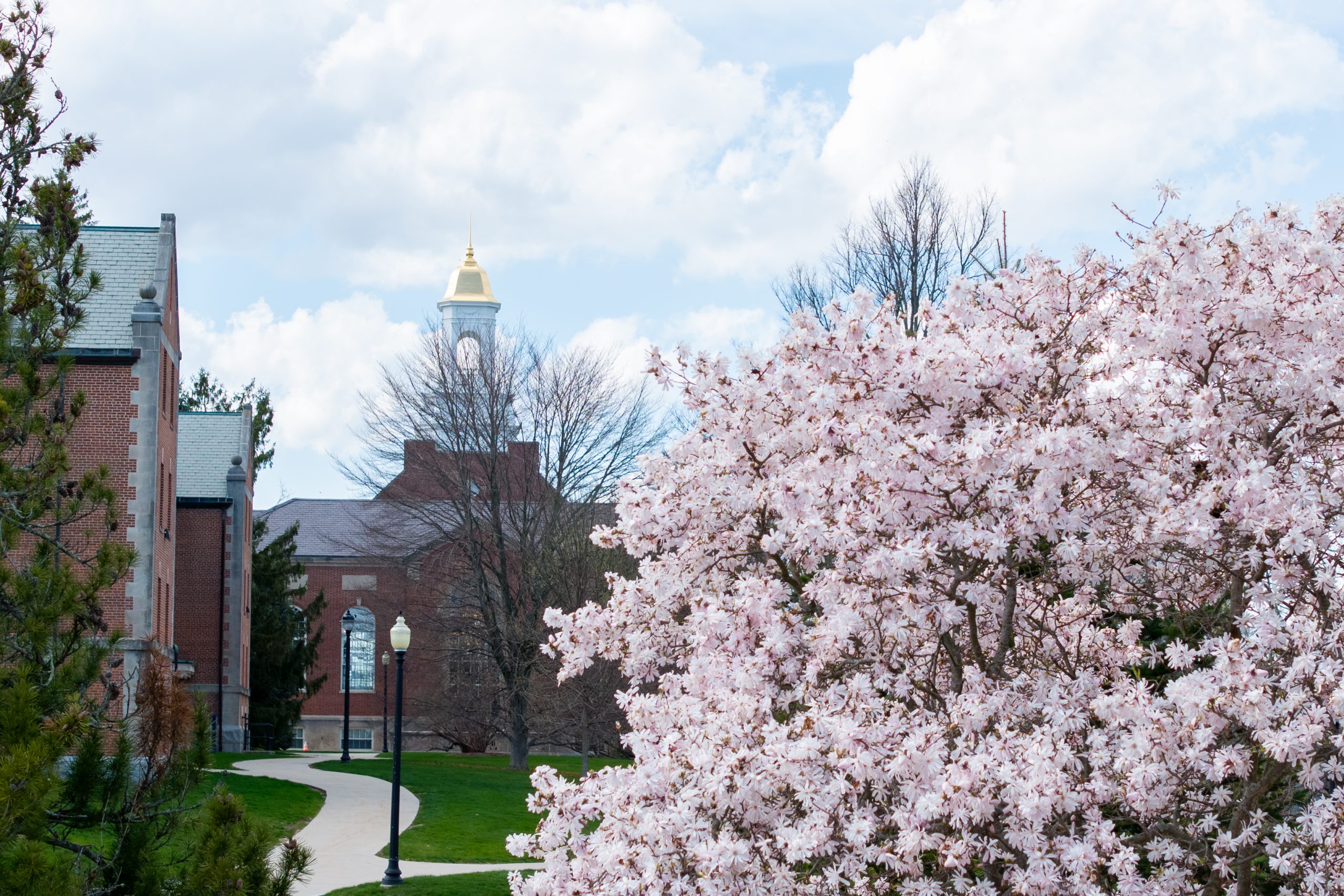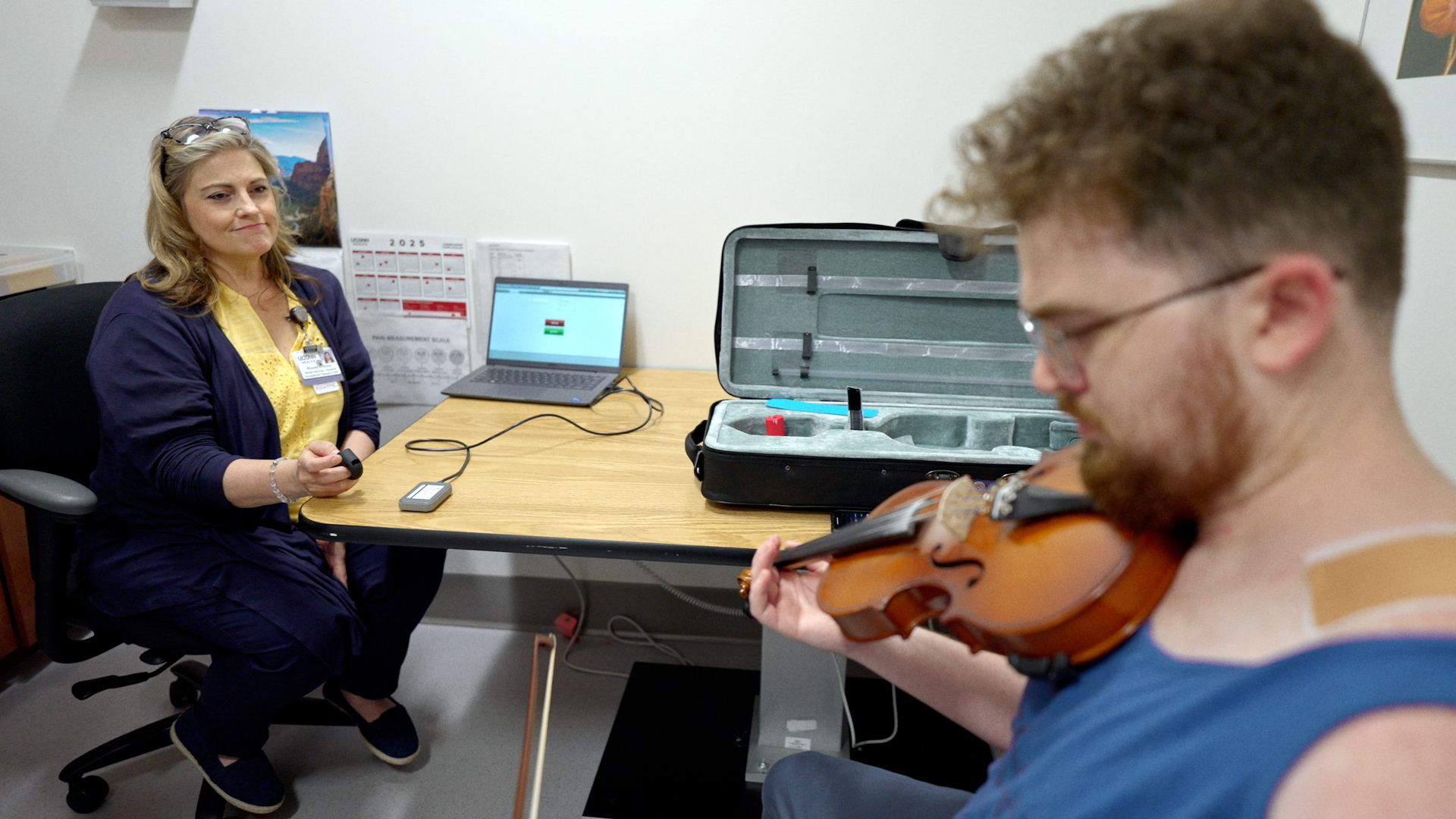
Sterling Townes raced across the floor, his hand cupping a spoon filled with the ingredients of a mango chutney and apple pear napoleon. Bringing the spoon to his girlfriend’s lips, he looked hopeful. Smiling, she nodded. It was good.
“She better like it,” Townes said, after returning to his station at the 10th annual Culinary Olympics. “We’re in too deep to change it now.”
Townes, a chef at the South Campus dining hall, was one of 16 teams of UConn chefs participating in this year’s extravaganza on Jan. 14. The contest gave each team 90 minutes to prepare and serve three tapas – small bites, or appetizers – using a set group of surprise ingredients that had to be featured in their selections. The ingredients included Alaskan King Crab legs, boursin cheese, fennel, mango chutney, horseradish root, blue corn meal, and tomatillos. The teams also had access to dozens of regular ingredients, a bounty of fruits, breads, vegetables, cheeses, spices, and more.

UConn’s Culinary Olympics, which include a cake decorating contest, a recipe contest, cooking demonstrations, and the Boiling Point competition, were launched by the Department of Dining Services in 2001 to showcase the talents of its staff and give them something to look forward to during the semester break.
Since then, the event has grown by leaps and bounds. This year’s cadre of 16 teams is almost four times the number of competitors in that first year. The popularity of the occasion forced it out of the kitchen at Putnam Refectory and into the Rome Ballroom, where a sea of cooking stations spread across more than half the room.
With starting times staggered so the four judges would always receive hot food, the room was a hive of activity for nearly four hours. Chefs pushed through the crowd of onlookers to grab additional ingredients from the pantry, fetch hot water or ice from the ballroom’s kitchen, and exchange scrawled notes with teammates, as they decided what to do with the main ingredients they had been presented with.
“We’re going with stuffed tomatillo with crab and boursin cheese, and mango chutney on top,” said Anthony Copeland, a chef with University Catering, as he began to prepare the appetizer.
“No go with the tomatillos,” interjected Hector Vega, one of his partners. “The tomatillos aren’t working.”
Copeland smiled and shrugged. They’d be stuffing plum tomatoes instead.

Several tables down, Lisa Charbonneau, working with two colleagues from Northwest Dining Hall, allowed that she had no idea what to do with the horseradish, one of the surprise ingredients. Nearby, Nick Otka, from Gelfenbein Dining Hall in Towers, grimaced as he looked at the King Crab legs. He had seen them before, he said, but never worked with them. As he struggled to shell the bright red delicacy, colleagues watching from the side yelled encouragement – and tips on the proper way to shell crab legs.
“Hey, no cheating,” a competitor yelled.
The new location was a boon for the 100 or so guests attending the event. By taking the work out of a crowded kitchen in Putnam Refectory – too crowded to allow anybody but chefs in the room – to the wide open expanse of the Rome Ballroom, people were able to walk among the teams, watch what they were cooking, and ask questions.

Throughout the afternoon, host Wayne Norman of WILI radio and Robert Landolphi, the culinary operations manager who has taken the lead in the event, mingled among the chefs with microphones, giving the crowd a heads up about what was being made at each station.
Dennis Pierce, director of dining services, was pleased with the new location.
“We had to move it here because of the sheer volume of competitors,” he said “But now that we’re here, it’s clear this is a much better venue. People can smell it, see it, get an idea how to cook something. I think it also enhances the pressure on the teams, who have a limited amount of time to cook something wonderful, but now also have to deal with the constant scrutiny of the crowd.”
The new venue did have one drawback – instead of stoves and ovens, the teams had to prepare their tapas armed only with two hot plates and a chafing dish. In the back room where the standard ingredients were kept, the teams also had access to blenders and food processors. But the lack of serious equipment didn’t seem to bother anybody, least of all the chefs, who leaped into action as soon as they opened their box of surprise ingredients.
As for Townes, whose girlfriend Lisa sampled his wares? Turns out she wasn’t the only one who enjoyed his napoleon – he and colleagues Scott Chapman and Charles Griffin took first place in Boiling Point, matching the mango chutney pastry with blue corn crab leg with garlic horseradish aioli, and a shrimp and tomatillo crepe with a mango beurre blanc.
The team of Jim Buell, Ana Martinez, and Leonel Francisco, from Whitney dining hall, finished second, serving a prosciutto fennel crab roll, shrimp and crab fennel sausage, and a crab cake with tomatillo salsa. A team from the Union Street Market – Eddie Torres, Amy Hallman, and Patricia Ruffino – finished third, whipping up a ginger crab salsa verde, mozzarella, prosciutto stuffed cabbage with an apple glaze, and shrimp on toast with horseradish boursin and green onions.


